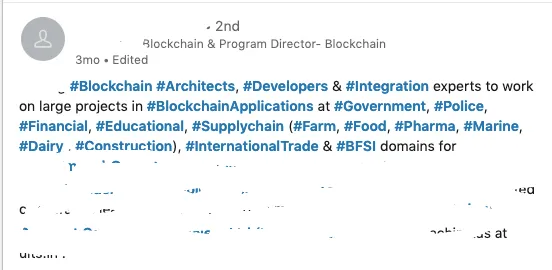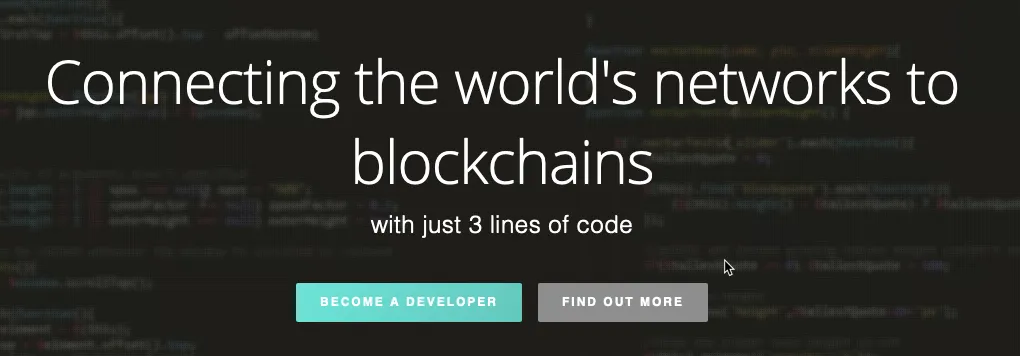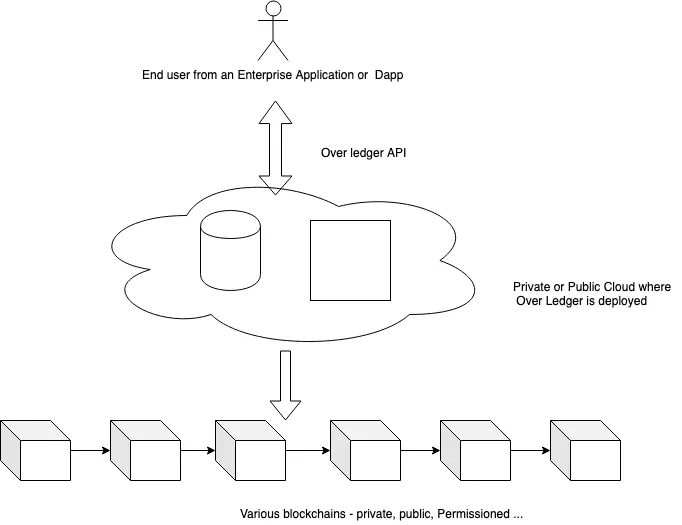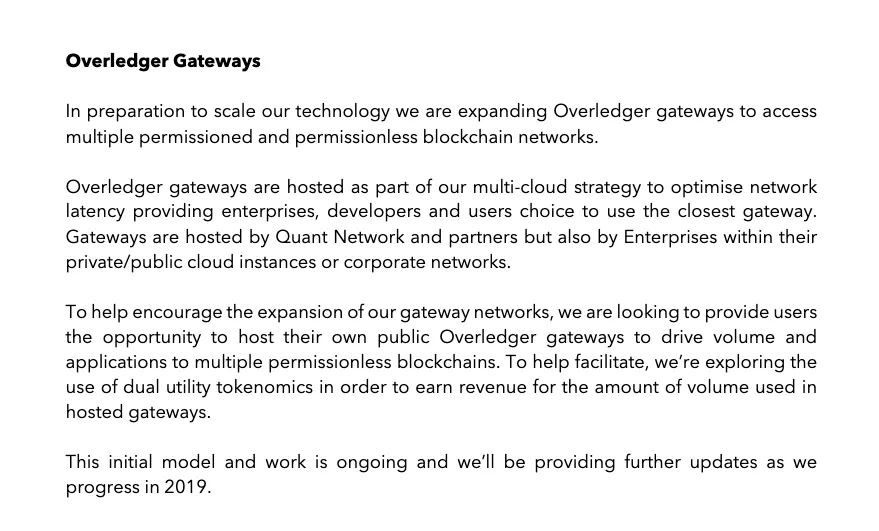These days one stumbles upon numerous projects working towards enabling enterprise to adopt blockchain, improving various layers of the blockchain etc. Its often very difficult to identify how these platforms work. Its often a good idea to write it down somewhere so that eventually someone can refer and understand what these products are all about.
What is DLT ?
DLT stands for Distributed Ledger Technology. In simple terms its the open ledger which is popularized by Bitcoin. Myriads of use cases of the public or distributed ledger are proposed.

(Blockchain is pushed everywhere as a marketing gimmick. This is from a certain such marketing ? Person!)
Do we need DLT ?
Well, as it stands today, DLT and Blockchain is more of a buzzword like Cloud was 10 years ago. Its thrown at every sales and marketing pitch. This post is not about when and how to use DLT but a quick review on what Overledger is all about.
Overledger
The product - platform which is here https://www.overledger.com/ claims to connect numerous enterprise class blockchains. At first look it almost sounds like the IBC aka Inter Blockchain Communication is all but done.

What is involved in IBC ?
IBC can be thought of either transfer of value (tokens), transfer of state or transfer of both value and state. There are numerous approaches using Interledger.org initiative, IBC what Cosmos and others are attempting, HTLC etc.
BTCRelay, Peace-Relay etc are other notable initiatives.
Overledger on the other hands adopts a different method where they seem to be running gateways to various chains like Etherium, Bitcoin & Ripple.
Overledger : what I could understand
.

This provides an interface to various blockchains via gateways. For transactions to be invoked on various target chains, this would just fine. As for data - if at all thats part of the system, it can be fetched from the chains and stored to say ElasticSearch and then exposed via APIs.

An example,
options object from the DLT transaction data:
[
{
dlt: "bitcoin",
toAddress: "2NFj2CVhE5ru7werwXUNCbirUW6KDo2d",
message: "QNT test",
options: {
amount: 1,
sequence: 2, // VOUT
previousTransactionHash: '77b04805f40a7cba6ed49be10d200f41462bfa266f24db91114798178c802058',
feePrice: 1e5,
value: 1
}
},
{
dlt: "ethereum",
toAddress: "0x0000000000000000000000000000000000000000",
message: "QNT test",
options: {
amount: '1', // Amount in wei (1 ETH = 10^18 wei)
sequence: 2, // nonce
feeLimit: '10',
feePrice: '10',
}
},
{
dlt: "ripple",
toAddress: "rHb9CJAWyB4rj91VRWn96DkukG4bwdtyTh",
message: "QNT test",
options: {
amount: '1', // Amount in drops (1 XRP = 1,000,000 drops)
feePrice: '0.000012', // Standard fee price on the XRP network
sequence: 1, // Transaction index number for this account (e.g if it's the first transaction after funding the address, sequence is 1)
maxLedgerVersion: 4294967295, // This is the maximum value that this option field can take
}
}
];
Centralization vs Decentralization
One of the big topics in the space of ledger technologies is centralization vs decentralization. This solution doesn't looks to be decentralized. Neverthless it may suit scenarios where one needs to talk to multiple chains.
Relevant links:
- Overledger.com
- Github : https://github.com/quantnetwork
- Whitepaper / Document on QUANT token utility : https://www.quant.network/QUANT_Token_Utility_V0.2.pdf